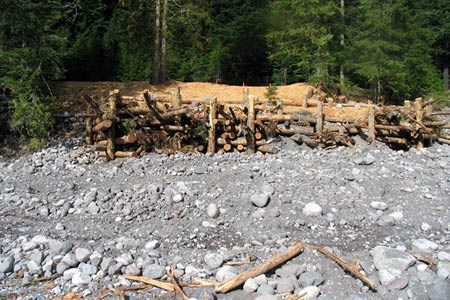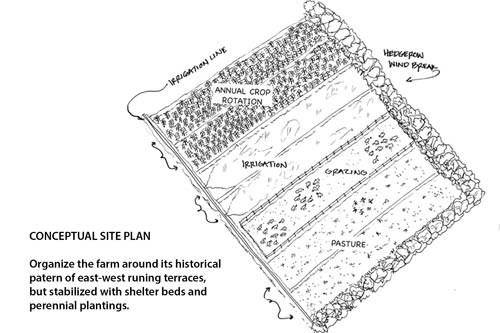
NPS
The five components of resilient systems, as outlined by the United States Department of Housing and Urban Development in the Rebuild by Design competition brief, offer a framework for evaluating the merits of particular interventions or management approaches. In cultural landscape research, this framework can be used to identify resilient systems of the past and present. In planning, this framework can be used to analyze the viability of adaptive management strategies or design interventions under the rehabilitation treatment approach. In stewardship, the resilience framework can support prioritization and implementation of preservation maintenance techniques that enhance the capacity of cultural landscapes to endure. In education, the framework supports a deeper understanding of history and helps to attract support for the protection of cultural landscapes.
A resilience approach, characterized by building capacity to manage unexpected change, can be integral to research, planning, stewardship, and education with cultural landscapes. However, neither the resilience framework nor any one component of resilience is the sole solution to managing cultural landscapes and helping them to endure stressors, disturbances, and environmental change. Cultural landscapes must be environmentally, economically, and socially durable. Their management requires not only the sound stewardship of built and natural resources, but also the acquisition of political, social, and economic support. Innovation, communication, community engagement, collaboration, and funding are fundamental to the ability of cultural landscape managers to navigate the complexities of preserving landscapes that convey historical significance.
Through the new Hubbell Farm Plan, the NPS is leasing fields to members of the local community.15 Lessees are encouraged to perpetuate traditional farming methods and convey traditional Navajo knowledge to the next generation, while strengthening the historic character of the cultural landscape for park visitors and the local community alike. Through the work of researchers and the sharing of local traditional knowledge, the Farm Plan identifies the components of the historic agricultural system that had endured before NPS ownership. A system of east-west-oriented terraced long fields, watered by irrigation ditches and protected by shelter belts of trees and perennial plantings, are to be rehabilitated in the landscape. Individual field terraces supporting traditional crops, grazing areas, or fallow pasture will be rotated annually according to local custom. Meat and produce will be sold within the community through a local food co-op.

A resilience approach will be particularly useful for the NPS in order to overcome its historical separation of cultural and natural resources management. This artificial distinction between culture and nature was inherited from the political context that gave rise to the agency in the early twentieth century. Since their inception as resources in the 1980s, cultural landscapes have challenged NPS managers to consider them as matrices of entwined cultural and natural systems. The resilience approach can help to bridge this gap.
15. Regenesis Collaborative Development Group, Inc., Hubbell Trading Post Farm Plan: Cultural Landscape Management Plan, Hubbell Trading Post National Historic Site, National Park Service (Santa Fe, N.M.: National Park Service Intermountain Regional Office, 2005), https://irma.nps.gov/App/Reference/Profile/2203902 (accessed November 12, 2014).
Last updated: February 24, 2017
